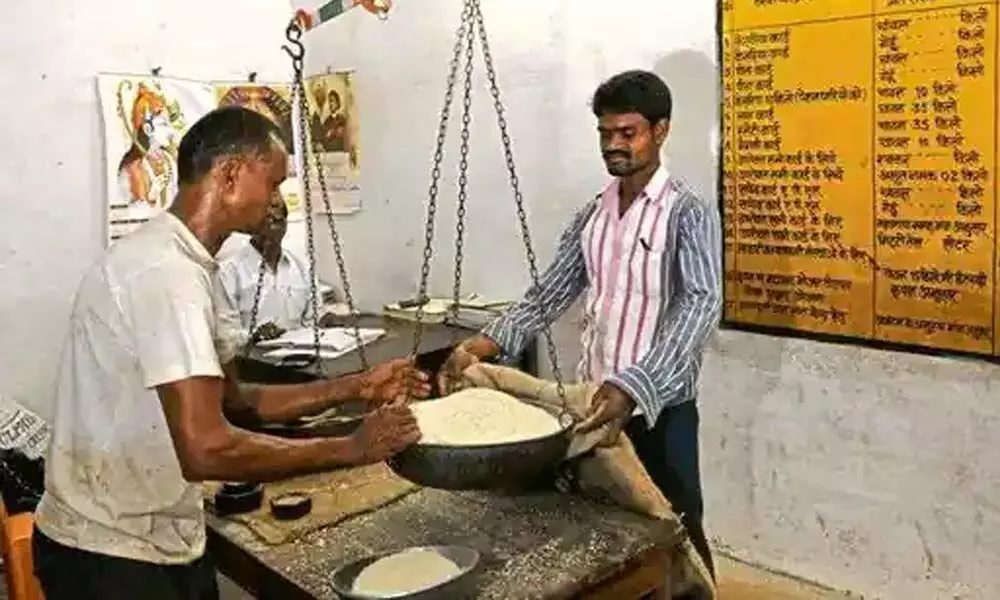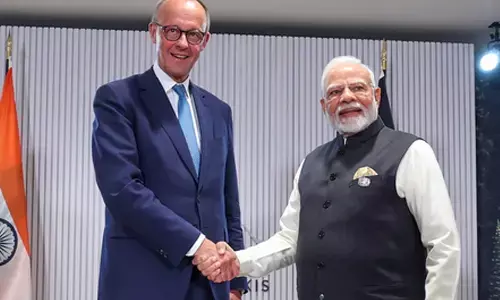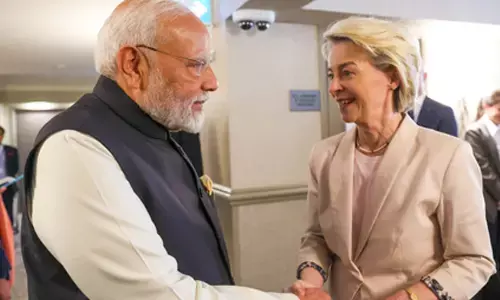Rice fortification policy, right or wrong?

Rice fortification policy, right or wrong?
In an ambitious attempt to combat the serious problem of anaemia due to malnutrition, Prime Minister Narendra Modi made an announcement to mandate rice fortification in all social safety net schemes by 2024.
In an ambitious attempt to combat the serious problem of anaemia due to malnutrition, Prime Minister Narendra Modi made an announcement to mandate rice fortification in all social safety net schemes by 2024. Rice fortification, a process of adding micronutrients like iron, folic acid and vitamin B12, is an effective, preventive and cost-efficient complementary strategy to address the nutrition problem within a short period. However, ensuring access to and affordability of healthy and diverse diets would be the key to a sustainable long-term strategy.
But is it really prudent to go for this fortification business? Has the Prime Minister been rightly advised - or advised at all - by some knowledgeable authority - in this regard? Arguments over fortification have been going on since long. There is also an apprehension that this is once again a corporate 'web and weave'.
The degree of lack of food diversity is absolutely dismal and critical in this country. Decent food eludes not just the poor and marginal sections of the society. Even the middle class is really not eating the right kind of food. Nothing guides Indians on their food habits except perhaps their tradition. We have all been consuming our staple food without much changes to the dietary (nutrient) quotient. Here comes the government now stressing on providing fortified rice.
This is a complete travesty of social justice and rights to food and nutrition, The phase-I data of National Family Health Survey (NFHS-5), 2019-20, shows that the prevalence of anaemia among children under five years of age has increased in 18 out of 22 states and Union Territories in the country. A similar trend was seen in the prevalence of anaemia among women in the age group 15-49 years where 16 out of the 22 states/UTs, reported an increase in anaemia among them. From 49.7 per cent in NFHS-4 the prevalence of anaemia in women in the age group 15-49 years has risen to 57.2 per cent in NFHS-5 (phase 1).
The leading cause of anaemia is, no doubt, iron deficiency, worsened by other nutritional deficiencies, especially Folic Acid, vitamin B6, and vitamin B12. This is where the food experts defer with the rice fortification plan. Food fortification, some experts say, is 'absolutely necessary' to fight anaemia and other serious implications of micronutrient deficiencies. However, several health and nutrition experts oppose the government's decision of mandatory food fortification. They claim that the chemical or synthetic fortification of rice with iron is 'detrimental' to health and is 'wasteful' and 'ineffective'.
Experts of the National Institute of Nutrition have argued against it in the past. We cannot afford to walk into a trap laid out by the corporates. Iron is not the only cause of anaemia. It is an impression gathered from childhood. That is all. What we are made to believe is that iron is going to do the magic. Haemoglobin is not just formed by iron. Haemoglobin is a complex molecule that requires protein and copper, and magnesium, Vitamin C, the NIN has pointed out already. Of course, not just the NIN, talk to any doctor, he or she would say the same thing.
The iron absorption in the Indian diet is a huge problem. It is just five per cent. We can improve absorption by adding animal protein with the diet and organ meat. Even if you keep eating like cows (green diet) the iron will not be absorbed. It is futile to push iron into our bodies without all the additional support system that the body requires to manufacture haemoglobin, scientists in the food business point out. But then who cares? The Prime Minister has set the target and the official machinery moves on. The announcement by the Prime Minister has given a major spurt to further strengthen the ecosystem of rice fortification before it goes on an auto-pilot mode. Fortified Rice Kernels (FRK) units have ramped up their capacities to produce 1.58 lakh tonnes of FRKs from around 94,000 tonnes. FSSAI is working on FRK standardisation and enabling setting up more NABL accredited labs and Bureau of Indian Standards Standardisation of Extruders/Blenders, to ensure quality, according to the officials of Niti Aayog.
FCI and the Ministries of Women and Child Development and Education are working in convergence to ensure distribution of 13.70 lakh tonnes of fortified rice in ICDS and MDM. Thus, rice fortification is also providing a unique opportunity for all the departments to ensure integrated efforts and strengthen the synergies.
This is a critical year for nutrition and effective action is required to create a sustained impact. To address the problem of malnutrition in the country, multi-pronged strategies need to be implemented simultaneously. Inarguably, dietary diversification is the key and a sustainable long-term solution to combat anaemia and micronutrient deficiencies and the Government has initiated many policy interventions to ensure the same. One need not object to the rice fortification policy. But more important is the use of other nutrients too.
For instance, it has been promoting millets on a mission mode to achieve nutritional security and has included millets under NFSA to be distributed in the social safety net schemes. The Prime Minister recently launched 35 crop varieties with higher nutrient-content to combat malnutrition. Under POSHAN 2.0, MoWCD has urged all Aspirational Districts to establish poshan vatika or nutri-garden to promote locally grown nutritious food. However, achieving the desired outcomes will have a longer gestation period and will also require conscious efforts to nudge behavioural change towards healthy diets.
In this context if someone argues that rice fortification is the most viable and welcome, preventive and complementary intervention to solve the problem of anemia in a short period of time, it becomes laughable. Historically, India has tested this idea of fortification by mandating iodised salt in 1962. Interestingly, CNNS Report 2016-18, subtly hinted at the success of universal fortification of salt by revealing iodine to be the only exception to micronutrient deficiencies in the tested sample. With this announcement, we have embarked upon a firm journey towards being a healthy country.
Meanwhile, the experts supporting the food fortification pointed out that there are 80 countries with legislation supporting the fortification of cereal flour, over 130 countries practise salt iodisation, and 13 countries mandate rice fortification. For several decades, low to middle-income countries (LMIC) have been strengthening the nutritional status of children through fortification in order to prevent micronutrient malnutrition diseases.
These arguments would go on. No one should dismiss any of these suggestions as useless. Each view has a valid point and all the proponents and opponents of the rice fortification theory agree that our children and women need the very best to pump health into their bodies.
So far politicians don't seem to have waded into the debate. It is so perhaps because it does not matter to them as it does not seem to be an eye-catching or 'ear-catching' announcement. There are far too many issues to be tackled and trivialised first. It is good that they did not latch on to it.















